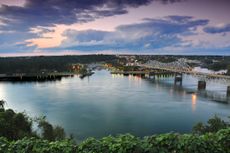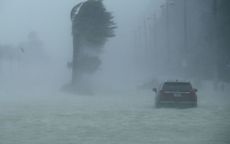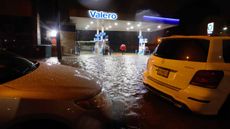5 Great Places to Buy a Vacation Home
With remote work on the rise, more people are looking for a permanent getaway.
- (opens in new tab)
- (opens in new tab)
- (opens in new tab)
- Newsletter sign up Newsletter


These days, the prospect of buying a vacation home is still alluring, but trickier to pull off than just a couple of years ago. Mortgage rates have risen from historic lows, and inventory remains low. The COVID-19 pandemic supercharged the practice of working from home; many employees continue to work remotely, giving them the freedom to virtually check in to the office from just about anywhere.
Getting the house of your dreams may be a challenge. In many popular areas, move-in ready homes are hard to find, though the booming sellers’ market of the pandemic is starting to cool (opens in new tab). During the pandemic, soaring home prices and other factors in California fueled an exodus to more affordable areas (opens in new tab) in the Southwest and West, leaving slim pickings for those looking for a second home in states like Arizona. The pandemic also coincided with a surge in natural disasters like forest fires, mud slides and flooding – making some vacation destinations less attractive as relaxing retreats or investments.
Here, we’ve highlighted five vacation areas around the country to suit every taste, featuring seaside towns with sandy beaches, mountain getaways for hikers, skiers and snowboarders, and lake retreats for boating and fishing enthusiasts. You have a shot of snagging a great home at an affordable price at these locations, based on inventory and price data from Realtor.com (opens in new tab). As of March, homes listed for sale in each county represented had a median price of no more than $400,000 — and in some cases, median prices were significantly lower.
The very qualities that make vacation destinations so attractive — lush pine forests, oceanfront and freshwater access — also make them particularly vulnerable to wildfires, hurricanes and flooding. So, we account for potential damage from extreme weather. Using data from riskfactor.com (opens in new tab), the Kiplinger team excludes locations that have an “extreme” or “severe” risk of flooding, fire or wind damage. The exception is Myrtle Beach, SC, which has a “severe” wind damage risk, but in our opinion, still has newer properties or more inland locations that are worth buying. Keep in mind, however, that even if you buy a property that is not at great risk, highly vulnerable communities may have a hard time getting affordable insurance, and infrastructure and businesses may be out of service for long periods after a natural disaster.
Take a look below and start dreaming.

Rutland County, Vermont
- County: Rutland
- March 2023 median list price: $323,500
- March 2022 median list price: $270,500
If it’s charm and the great outdoors you crave, look to Vermont. Rutland County is home to the Killington Ski Resort (opens in new tab), which offers skiing, snow boarding and mountain biking. The resort also hosts an annual “Dazed and Defrosted” spring festival. The Appalachian Trail (opens in new tab) passes close to Killington Peak, and outdoor adventure companies offer highly-rated kayaking, hiking and other trips.
Also nearby are the Green Mountains and other hiking trails, a climbing gym and children’s museum. There’s plenty of cultural entertainment, with theaters, the Norman Rockwell Museum and other art galleries, and Middlebury College just up the road.
Rutland is incredibly affordable. A well-maintained farmhouse built in 1875 is $369,000, with almost 3,000 square feet, a swimming pool and barn. The 6-bedroom, 5-bath house is in the tiny town of Fairhaven, VT. If skiing is your thing, there is a $295,000 condo near the slopes of Killington, offering one bedroom, one bath, two decks, that is next door to a pool and fitness center. The unit has mountain views and 685 square feet.
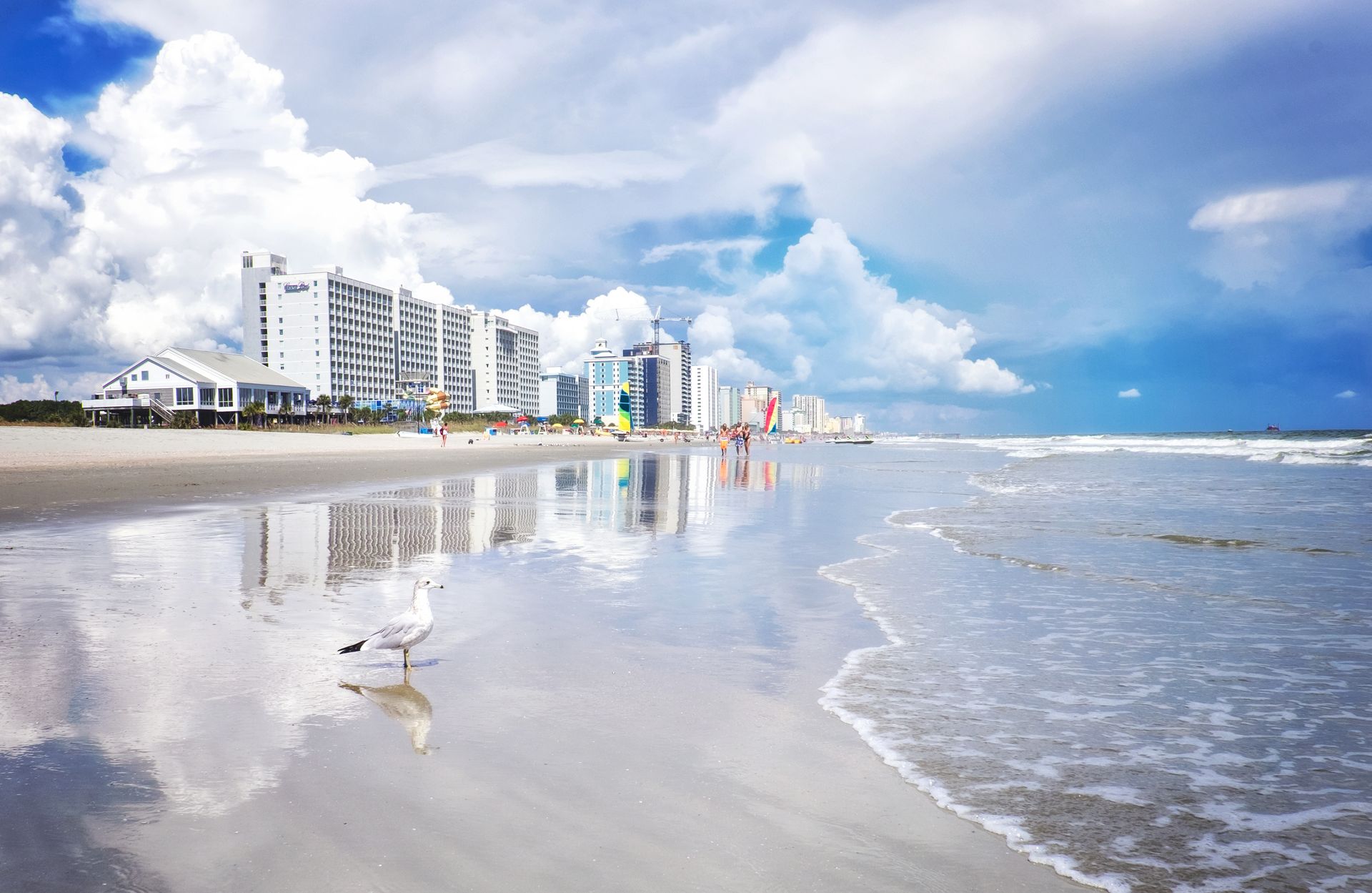
Myrtle Beach, South Carolina
- County: Horry
- March 2023 median list price: $349,995
- March 2022 median list price: $395,498
If sand and ocean waves are on your must-have list, you can find them at Myrtle Beach (opens in new tab) and other beaches on the 60-mile “Grand Strand” lining the South Carolina coast. Besides relaxing and swimming at the shore, Myrtle Beach visitors can wander the boardwalk and promenade — which features shops and restaurants and stretches more than a mile along the beach — head to one of the area’s amusement or water parks, or check out one of the many free festivals, parades and concerts held throughout the year.
Golfers are drawn to the area’s challenging and beautiful greens and have their pick of nearly 100 courses. Shoppers can browse flea markets, factory outlets and everything in between. When you need a break from the beach scene, take a kayak or paddleboard to the Waccamaw River or birdwatch at the surrounding 55,000-acre Waccamaw National Wildlife Refuge (opens in new tab).
Myrtle Beach has been on a building spree over the past few years, according to a study by the Insurance Inspection Network (opens in new tab). That’s good news for home buyers, as added inventory helps cushion demand and slow price growth. And in an area vulnerable to storms (opens in new tab), buying newer properties means that consumers will benefit from updated building codes that better protect against environmental risks. For those wanting an oceanfront condo, consider the risks from poorly maintained or designed buildings that may face structural damage — a top-of-mind risk for older condominiums since the 2021 collapse of a Florida condo building. Be sure to understand the reserve funds and inspection history (opens in new tab) of any condo unit you may want to buy, and review the Post and Courier list of vulnerable South Carolina condos (opens in new tab).
Recently, a newly-constructed, $285,000 home in Myrtle Beach featured 1,467 square feet of space, three bedrooms and two bathrooms, a garage, plus access to a community pool and clubhouse. The homeowners association (HOA) fee is $275 per month. If you must be on the waterfront, there is a 745-square-foot condo in a newer high-rise right on the beachfront for $199,000, with one bedroom and one bath. The HOA fee is $857 per month.
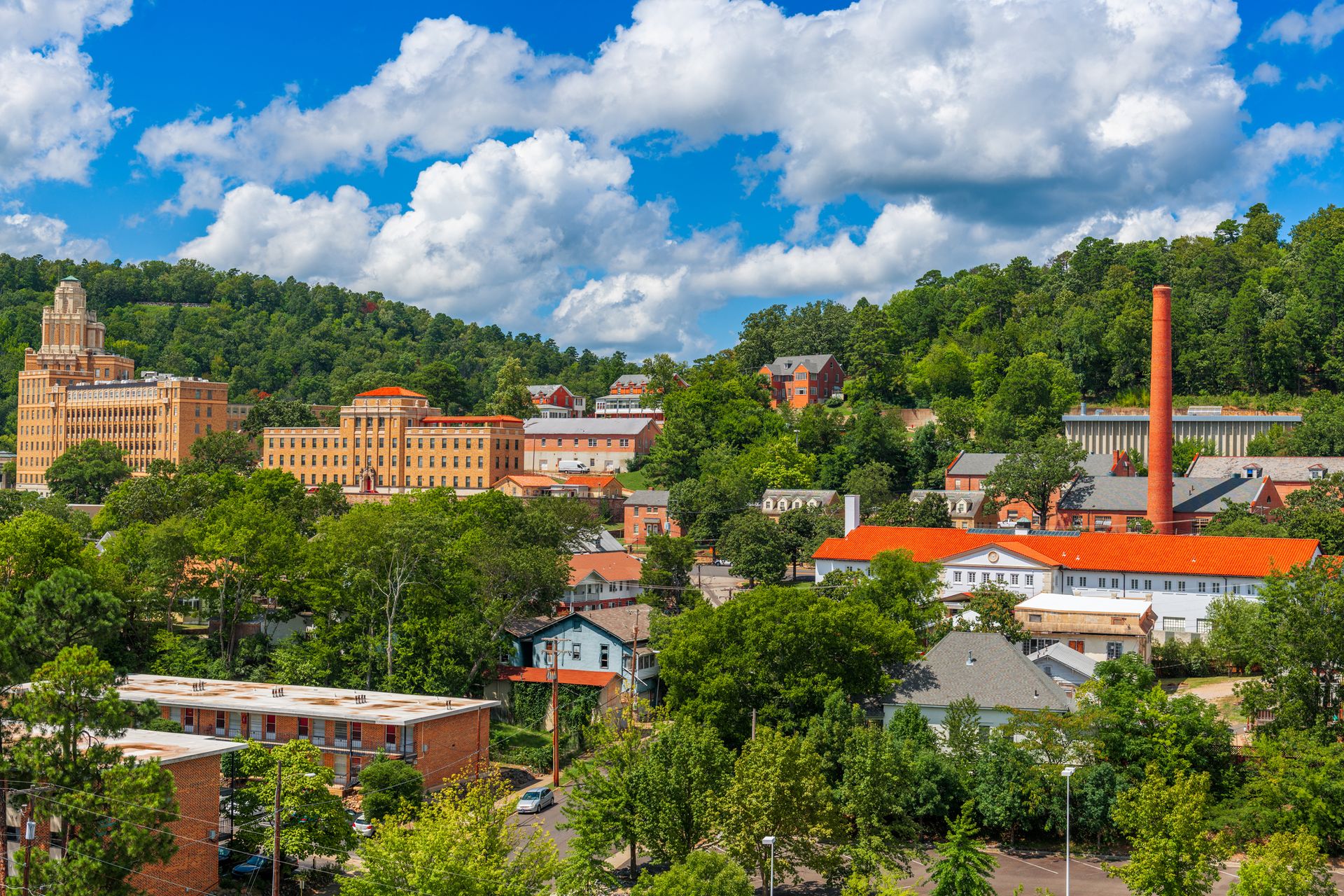
Hot Springs, Arkansas
- County: Garland
- March 2023 median list price: $268,000
- March 2022 median list price: $240,000
Nestled in the Ouchita Mountains, Hot Springs was founded as a spa town in the 1850s, and much of that focus on relaxation and natural beauty remains. This small city’s main attraction is the Hot Springs National Park (opens in new tab), where you can still soak in the thermal waters in some of the original bathouses built in the early 1900s (the outdoor springs are too hot for bathing).
Kids will enjoy the nearby Mid-America Science Museum (opens in new tab), mini-golf, an adventure park and swimming in nearby lakes. Hot Springs also has an art scene (opens in new tab), with many galleries, artisans and a community theater. Property-related crime rates (opens in new tab) have been ticking up in the city, so be sure to research neighborhood safety before buying a home.
In the community of Hot Springs Village, a three-bedroom, two-bath home on Lake Lago has a large deck, lake and mountain views for $349,900 and HOA fees of $100 per month. The Village community boasts 12 lakes, 15 tennis courts, nine golf courses and over 30 miles of trails. In Hot Springs National Park, close to town but still with a view of West Mountain, a classic 1940 Federal style home is listed for $369,900. With four bedrooms and 4.5 baths, the 3,503-square-foot home has a covered side porch and a large primary suite with a fireplace.
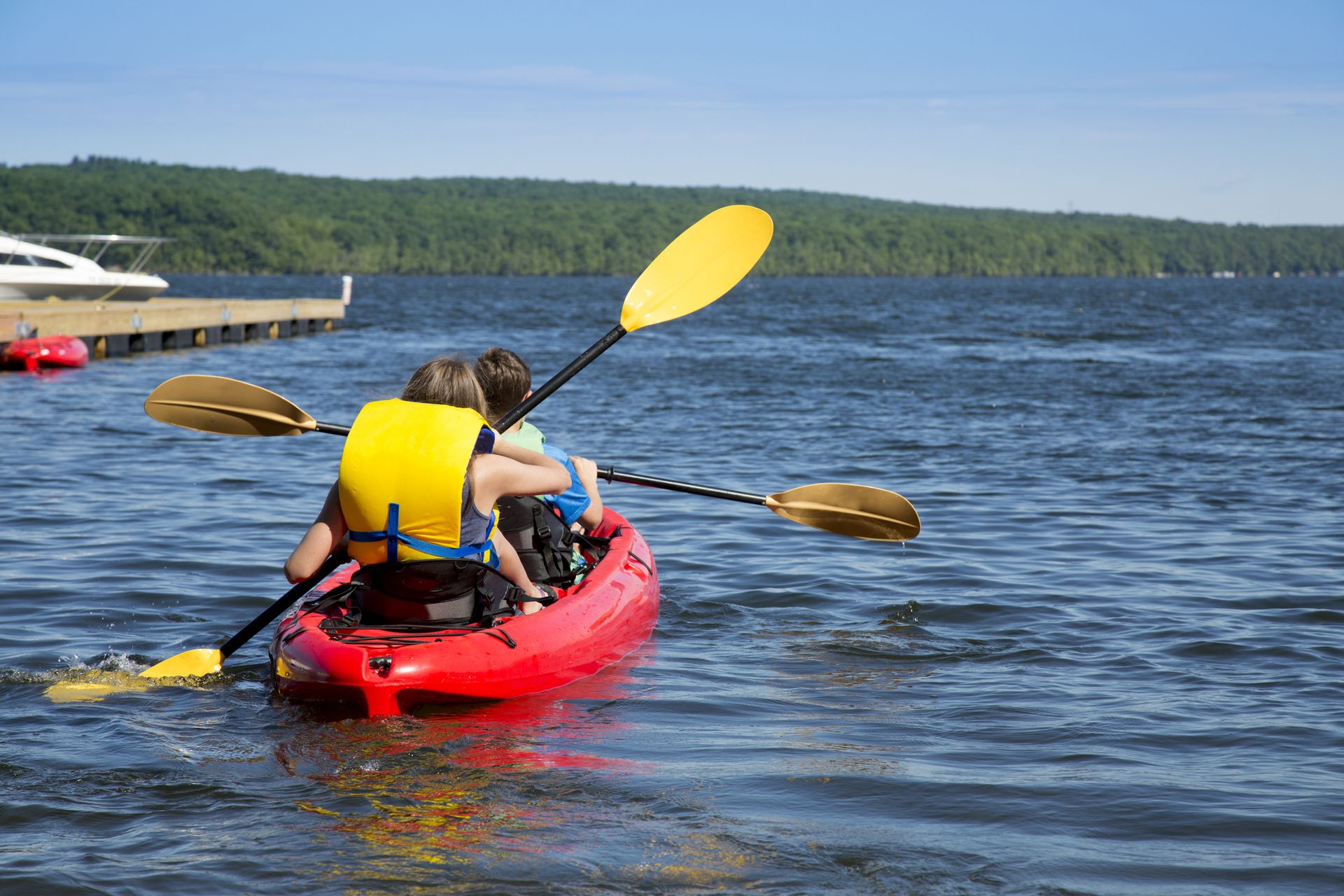
The Pocono Mountains
- Counties: Monroe, Pike and Wayne, Pennsylvania
- March 2023 median list price: $318,000 to $349,000
- March 2022 median list price: $341,627 to $349,700
You can ski, hike, fish and boat to your heart's content in the Pocono Mountains, which are convenient to New York City and Philadelphia and draws some 28 million visitors each year. Skiers and snowboarders can choose among more than 185 hills and trails, ranging from bunny slopes to double black diamonds. Or try out other winter activities, such as snow tubing, cross-country skiing and snowmobiling.
In warmer months, tee up at any of the region’s many golf courses, which offer a variety of terrains to challenge golfers. To keep the kids happy, take them to play mini golf or laser tag, drive go karts, or splash down water slides at one of the area’s family entertainment centers.
Skiers who want to be near Camelback Mountain (opens in new tab) can find a townhome for less than $400,000. In the Northridge community, a three-bedroom, two-bathroom unit with 1,404 square feet of space and a deck recently had a $389,900 price tag. The unit is well-maintained, walkable to the ski resort, and has HOA fees of $367 per month. Is a lake retreat more your style? In Pocono Pines, a two-bedroom, 2.5-bathroom, 1601-square-foot townhome with views of Pinecrest Lake had a $350,000 asking price; the HOA fee is $683 a month.
If you want to avoid planned communities, there are plenty of options scattered through the area. In Canadensis, a 3-bed, 3-bath home on just under seven acres has a $400,000 listing price and 2,170 square feet of space.

San Antonio, Texas
- County: Lincoln
- March 2023 median list price: $307,973
- March 2022 median list price: $316,300
If your idea of vacation is more urban, but still close to natural escapes, then San Antonio is for you. This vibrant, growing city is known for its food, nearby national parks and the Alamo. Across three centuries, the city has been home to Indigenous, Mexican and European residents, creating a unique culture. San Antonio is a UNESCO Creative City of Gastronomy (opens in new tab); you can enjoy the best of Tex-Mex, Mexican, barbecue and other cuisines, and sample new flavors at food stalls. The Historic Market (opens in new tab) showcases Mexican music, art and food, and the famed River Walk (opens in new tab) acts as a gathering place to dine, listen to live music and shop.
Families will enjoy exploring old Spanish missions (opens in new tab) as well as natural bridge caverns, the Japanese tea garden, Sea World and the San Antonio Zoo. The beach town of Corpus Christi is a two-hour drive from San Antonio, and Austin is about an hour away. San Antonio recently tightened regulations on short-term rentals, so be sure to talk to a knowledgeable realtor if you intend to rent your home on a platform like Airbnb.
If you want to be close to River Walk and downtown nightlife, you can get an apartment or small home for under $400,000, but spending up to $450,000 will deliver more value. A two-bedroom, 2.5-bath home in the Lavaca neighborhood is listing for $397,500. This modern home was designed by an award-winning architect and has 1,234 square feet. For those wanting a more relaxing space, a three-bedroom, two-bath home in the leafy Beacon Hill neighborhood is listed for $389,000. The 1,575-square-foot home has a large backyard, with a new patio and pergola, a privacy fence and mature trees views.

Ellen writes on environmental, social and governance (ESG) investing and sustainability. She was an ESG manager and analyst at Calvert Investments for 15 years, focusing on climate change and consumer staples. She served on the sustainability councils of several Fortune 500 companies, led corporate engagements, and filed shareholder proposals.
Prior to joining Calvert, Ellen was a program officer for Winrock International, managing loans to alternative energy projects in Latin America. She earned a master’s from University of California in international relations and Latin America. She is fluent in Spanish and Portuguese.
-
-
 Deeper Regional Banking Crisis Unlikely after Triple Failure: Kiplinger Economic Forecasts
Deeper Regional Banking Crisis Unlikely after Triple Failure: Kiplinger Economic ForecastsEconomic Forecasts Deeper Regional Banking Crisis Unlikely after Triple Failure: Kiplinger Economic Forecasts
By Rodrigo Sermeño • Published
-
 Spending Cuts Could Trigger Deeper Slowdown: Kiplinger Economic Forecasts
Spending Cuts Could Trigger Deeper Slowdown: Kiplinger Economic ForecastsEconomic Forecasts Spending Cuts Could Trigger Deeper Slowdown: Kiplinger Economic Forecasts
By David Payne • Published
-
 The 10 Cheapest Countries to Visit
The 10 Cheapest Countries to VisitDespite inflation, there are some areas where the strong dollar will definitely work in your favor. Travel, for example... we find the cheapest places to visit around the world.
By Quincy Williamson • Published
-
 10 Big U.S. Cities With the Cheapest Apartment Rents
10 Big U.S. Cities With the Cheapest Apartment Rentsplaces to live Apartment dwellers pay less than the national average in these cities with the cheapest rent.
By Dan Burrows • Last updated
-
 The 11 Most Expensive Cities to Live in the U.S.
The 11 Most Expensive Cities to Live in the U.S.real estate From metro areas on both coasts to the middle of the Pacific Ocean, these are the most expensive cities to live in the U.S.
By Dan Burrows • Last updated
-
 The 25 Cheapest Places to Live: U.S. Cities Edition
The 25 Cheapest Places to Live: U.S. Cities Editionplaces to live Have a look at the cheapest places to live in America for city dwellers. Is one of the cheapest places to live in the U.S. right for you?
By Dan Burrows • Last updated
-
 Should I Cancel Amazon Prime? Here Are 12 Good Reasons
Should I Cancel Amazon Prime? Here Are 12 Good ReasonsAmazon Prime The giant retailer has had a year of ups and downs, leaving many wondering: Do I still need Amazon Prime?
By Bob Niedt • Last updated
-
 10 Things to Know About Hurricane Insurance Claims
10 Things to Know About Hurricane Insurance ClaimsBecoming a Homeowner Hurricane damage? Know what’s covered, what isn’t, and how to make the most of your policy if you need to file a claim.
By Kimberly Lankford • Published
-
 The Most Expensive Natural Disasters in U.S. History
The Most Expensive Natural Disasters in U.S. HistoryEconomic Forecasts Wind, water, fire and drought have all wreaked havoc on the United States. What’s been the worst?
By David Muhlbaum • Last updated
-
 How to Shop for a Low Mortgage Rate
How to Shop for a Low Mortgage RateBecoming a Homeowner Rates are higher this year, but you can still find an affordable loan.
By Daniel Bortz • Published






